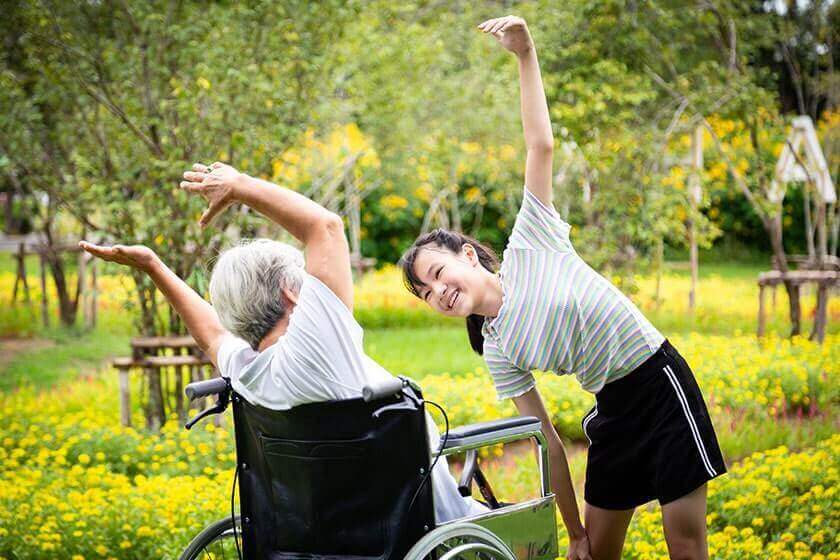The question why do elderly die from broken bones often arises when discussing the health concerns of older adults. It is a well-documented fact that as people age, their bodies undergo significant changes, making them more susceptible to injuries such as bone fractures. Understanding the intricacies of these changes can help us better protect our senior loved ones and improve their quality of life.

The Fragility of Aging Bones
As we grow older, our bone density decreases, leading to weaker and more fragile bones. This process, known as osteoporosis, is a major factor in why elderly individuals face greater risks when they suffer from broken bones. In advanced stages, even minor falls or bumps can result in serious fractures.
The Role of Osteoporosis
Osteoporosis is a condition characterized by bones that become brittle and susceptible to fracture. This state is common in seniors due to a decline in calcium and vitamin D absorption. It’s crucial for older adults to maintain a diet rich in these nutrients to help mitigate bone loss. Resources like viewing why certain aging in place can provide guidance on how to safely navigate environments to reduce fall risk.
Impact of Previous Health Conditions
Seniors often have underlying health conditions such as diabetes, heart disease, or arthritis, which can complicate recovery from bone fractures. Conditions that affect mobility or blood circulation can delay healing times significantly.
Understanding the Complications
The aftermath of a broken bone in the elderly can be fraught with complications. Here are some critical outcomes that can stem from fractures:
Prolonged Immobility
After a bone fracture, a senior might experience extended periods of immobility. This period is crucial because it can lead to other severe health issues like bedsores, muscle atrophy, and respiratory problems. Maintaining movement is key, and products like a lift chair for seniors can aid in easing mobility.
Increased Mortality Risk
Studies have shown a marked increase in mortality rates among seniors who suffer hip fractures. The reasons are multifactorial, including post-operative complications and the development of blood clots due to limited movement.
The Significance of Timely Medical Intervention
Timely and appropriate medical intervention can greatly influence the outcomes for seniors with broken bones. Prompt surgical repair and rehabilitation can improve mobility and reduce the risk of further complications. Additionally, personal alert systems like personal alert systems are critical in ensuring seniors receive help quickly if they fall.
Rehabilitation and Physical Therapy
Physical therapy plays a critical role in recovery by helping seniors regain mobility and strength, preventing further deterioration. Regular exercise tailored to their needs can enhance balance and coordination, reducing the likelihood of future falls.
Preventative Measures to Consider
Preventing falls is crucial in protecting our elders from the dangers associated with broken bones. Here are a few measures that can be taken:
Environment Modification
Adapting homes to be more elder-friendly can significantly lower fall risks. Simple adjustments like removing tripping hazards and installing grab bars can make a difference. The utility of a grabber tool can help seniors reach objects without straining themselves.
Regular Check-ups
Regular medical check-ups can ensure that existing health issues are managed effectively, preventing deterioration that might contribute to falls. During these visits, doctors can also recommend supplements to strengthen bones.
A Holistic Approach to Elderly Care
Combining nutritional support with lifestyle adjustments can greatly benefit the elderly. Adding products like a hand massager can ease joint pain and encourage circulation, fostering overall wellness.
Emotional and Psychological Support
Mental health is equally important as physical health. Seniors need emotional support to handle the stress of aging and its consequences, including dealing with physical injuries. Close family ties and community support can significantly aid recovery.
Conclusion
Understanding why the elderly die from broken bones requires a multifaceted approach one that considers the physical, medical, and psychological components of aging. By enhancing our awareness, implementing preventive strategies, and being proactive about health concerns, we can improve outcomes for our senior loved ones.

FAQs
- Can a broken bone lead to death in the elderly? While a fracture itself isn’t fatal, complications from treatment and limited mobility post-injury can increase mortality risks.
- How can I help prevent bone fractures in seniors? Ensuring a safe home environment and a balanced diet rich in calcium and vitamin D are crucial steps.
- What are the best ways to aid recovery from a bone fracture? Physical therapy, proper medical supervision, and psychological support play key roles in recovery.
This article contains affiliate links. We may earn a commission at no extra cost to you.

